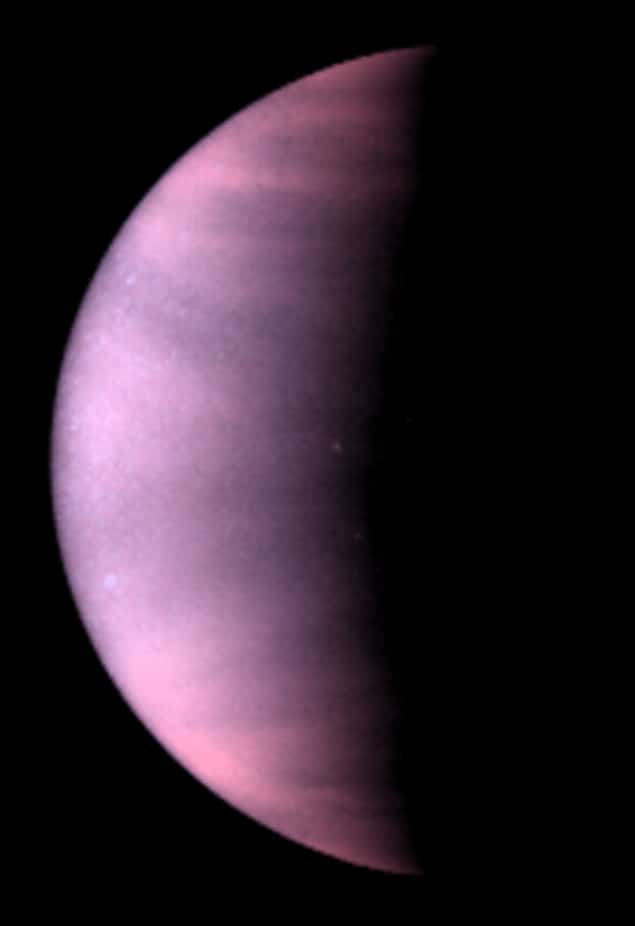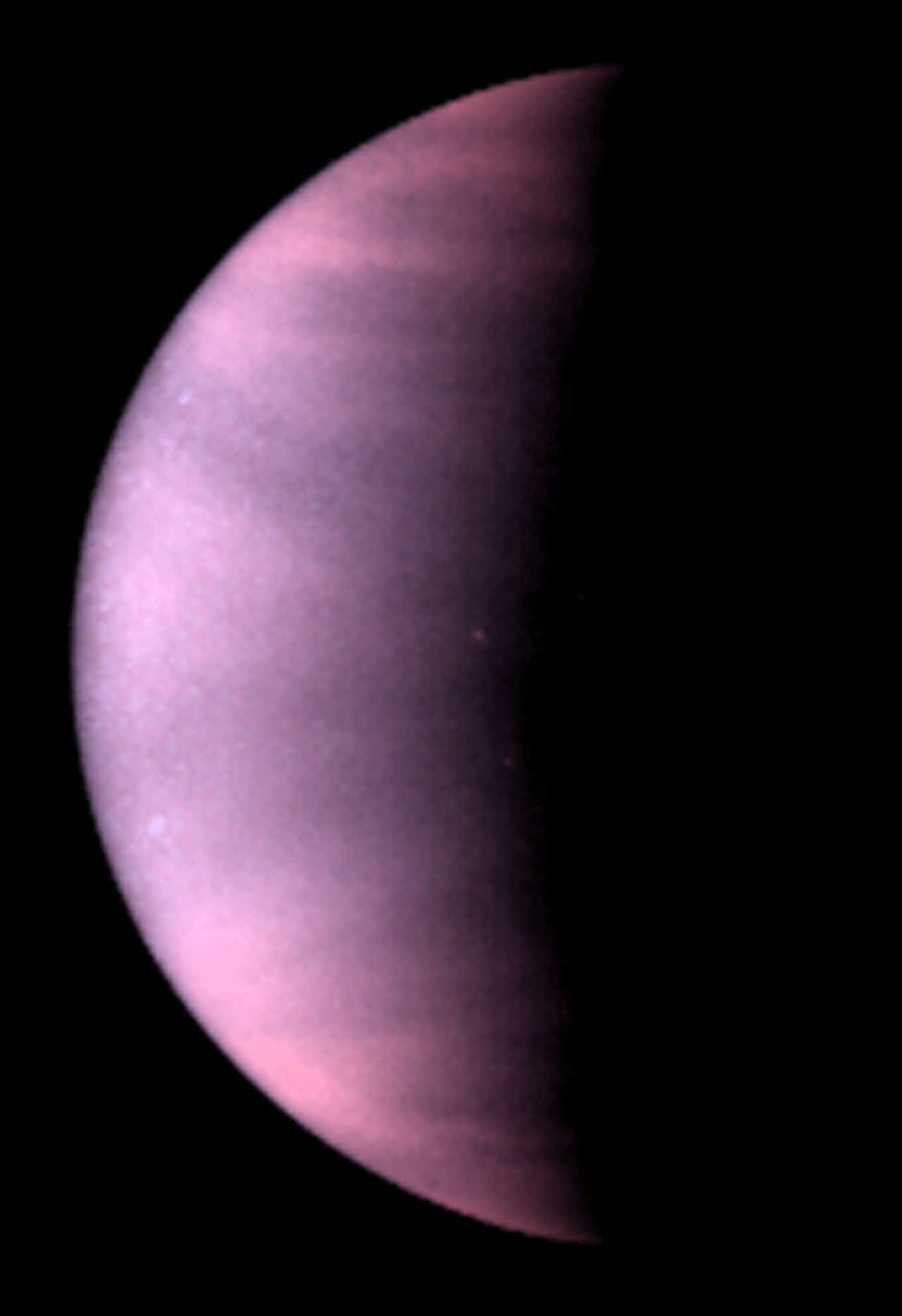
For a planet sometimes known as “Earth’s twin”, Venus is astoundingly inhospitable. Its surface temperature of 735 K is hot enough to melt lead. Its surface pressure of 94 atmospheres will crush all but the hardiest spacecraft. And if that wasn’t enough, its thick, oppressive clouds drip with sulphuric acid.
Despite these disadvantages, the possibility of life on Venus is a hot topic among astronomers and astrobiologists. It last hit the headlines in 2020, when researchers led by Jane Greaves of Cardiff University, UK announced they had observed phosphine in the planet’s atmosphere. Since the only ways of generating phosphine on Earth relate to anaerobic metabolic processes in microbial life, the observation was widely interpreted as evidence that such life must exist on Venus, too.
Within weeks, however, other astronomers were challenging the validity of the result – sometimes in terms that were almost as corrosive as Venus’s sulphuric-acid-rich clouds. Then, in 2022, a follow-up study by NASA’s SOFIA mission found no evidence of phosphine. The earlier finding, it seems, was incorrect. With that, things went quiet.
A cloudy habitat
A new study by researchers in the US, Canada and the UK has now reopened the debate by focusing not on phosphine, but on the stability of nucleic acids in Venus’ clouds. These clouds stretch from 48–60 km above the planet’s surface in a near-continuous stack, and temperatures within them are comparatively mild: 263 K (-10 °C) at their outer limit, rising to a balmy 310 K (37 °C) further in. Covalent chemical bonds form readily at such temperatures, and the clouds offer both a liquid environment and a supply of energy. What’s not to like?
In their study, which is published in PNAS, astrophysicist Sara Seager of the Massachusetts Institute of Technology and her colleagues acknowledge two “potential show-stoppers”. The first is that Venus’ clouds are critically short of water, the substance upon which all life on Earth depends. The second is that the concentration of sulphuric acid in Venus’ clouds is so high that even acid-loving organisms, such as bacteria that thrive in mine tailings and undersea volcanoes, could not survive there.
For proponents of the life-on-Venus theory, though, this is not the end of the story. Although the so-called building blocks of life, DNA and RNA, are not stable in such high concentrations of sulphuric acid, Seager and colleagues found evidence that all five of their base molecules – the building blocks of the building blocks, if you will – can survive just fine.
Acid test for life
To obtain this evidence, members of the team immersed samples of the five nucleic acid bases (adenine, cytosine, guanine, thymine, and uracil) and a few similar molecules in 98% sulphuric acid. They then used a combination of spectroscopic techniques to study the molecules’ structure after 18-24 hours. With one of these techniques, carbon-13 nuclear magnetic resonance (NMR) spectroscopy, they repeated the measurement two weeks later to check whether the molecules degraded over time. For the most part, the answer was no. Among other markers of stability, the molecules’ central aromatic rings remained unbroken, and the position of the carbon “peaks” in the NMR spectrum did not change, even after two weeks of wallowing in acid.

NASA probe captures optical images of Venus’ surface
Proving the stability of DNA and RNA bases in sulphuric acid is one thing. Finding a way to combine these bases into a sulphuric acid-proof information-carrying biopolymer is another. Without that, there can be no Venusian version of genetics or Darwinian evolution. Still, Seager and colleagues conclude their study on a bullish note. “We do not know if the origin of life in concentrated sulfuric acid is possible, but such a possibility cannot be excluded,” they write. “Life could use concentrated sulfuric acid as a solvent instead of water and could have originated in the cloud droplets in liquid concentrated sulfuric acid… In this scenario, the Venus atmosphere could still support the strictly aerial concentrated sulfuric acid-based life.”
